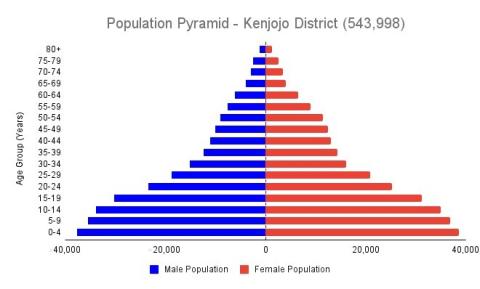Overview
KYENJOJO DISTRICT PROFILE:
Kyenjojo District is located in the Western Region of Uganda, approximately 250 kilometers west of Kampala, the capital city. Established on November 28, 2000, it was carved out of Kabarole District and later gave rise to Kyegegwa District on December 22, 2009.
Geography and Borders
The district shares borders with Kibaale to the North, Kyegegwa to the East, Kamwenge to the South West, and Kabarole to the West. Its geographical coordinates are approximately latitude 0.609292 and longitude 30.640123.
Administrative Structure
Kyenjojo District is divided into three counties:
Mwenge North
Mwenge Central
Mwenge South
The district headquarters are situated at Kasiina, in Kyenjojo Town, which serves as the administrative and commercial center.
Kyenjojo has 31 Lower Local Governments, that is 19 sub counties and 12 Town councils. It has 168 parishes and 875 villages
Population
According to the 2024 National Population and Housing Census, Kyenjojo District had a population of 543,998 people.

Economy
Agriculture is the backbone of Kyenjojo's economy, with the majority of residents engaged in farming. The district is renowned for producing "Mwenge," a traditional banana beer, which is a significant cultural and economic product.
Education
The district places a strong emphasis on education, offering:
128 Government and 374 private/community primary schools
- 9 Government and 25 private/community secondary schools
Health Services
Kyenjojo District is served by 26 functional health facilities, comprising:
16 government-owned facilities
- 10 private non-profit facilities
The district has achieved a safe water coverage rate of 72.3%, surpassing the national average of 67%.
Cultural Significance
The name "Kyenjojo" translates to "the place where elephants live" in the Rutooro language, derived from the word "ENJOJO" meaning elephants. This reflects the district's rich cultural heritage and historical ties to the Toro Kingdom.
Overall, Kyenjojo District combines a rich cultural heritage with a strong agricultural economy, supported by a growing population and improving social services.